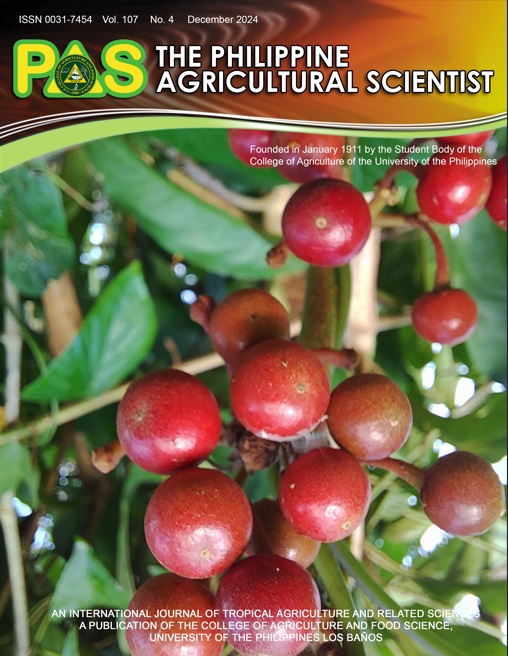Morphological and Physiological Changes of Katuray (Sesbania grandiflora) during Seed Maturation [RESEARCH NOTE]
Abstract
Katuray (Sesbania grandiflora), whose flowers are consumed as steamed vegetables, is an important green manure crop in the Philippines. Understanding different processes leading to seed maturity can aid in determining S. grandiflora’s seed quality, preventing premature harvesting for seed increase, ensuring efficient propagation and production of seedlings, and breeding new varieties of this crop. Multiple flowers were tagged, and three to five pods were collected five days after anthesis (DAA) and at a five-day interval thereafter until 100% germination was achieved. Seed size, moisture content (MC), dry weight, germination percentage, and embryo development were observed and recorded. Seed length was highest at 55 DAA and decreased thereafter. Moisture content had an increasing trend from 15 to 50 DAA then decreased afterwards. The increase in seed size can be attributed to the increase in accumulated dry matter while the decrease in MC can be attributed to the weakening ability of the seed as a sink and its acquisition of desiccation tolerance. Germination started at 45 DAA and reached 100% at 60 DAA. For embryo development, walking stick stage was observed at 55 DAA and full seed maturity was attained at 75 DAA. Seed physiological maturity was observed at 60 DAA, where highest seed dry weight was measured. Correlational analysis of different seed parameters showed a positive correlation of seed size, dry weight, and germination rate while a negative correlation was observed in germination rate and moisture content. Documentation of the morphological changes during seed maturity and the relationship of these changes have biological, breeding, and production implications in seed systems for this underutilized crop species.


